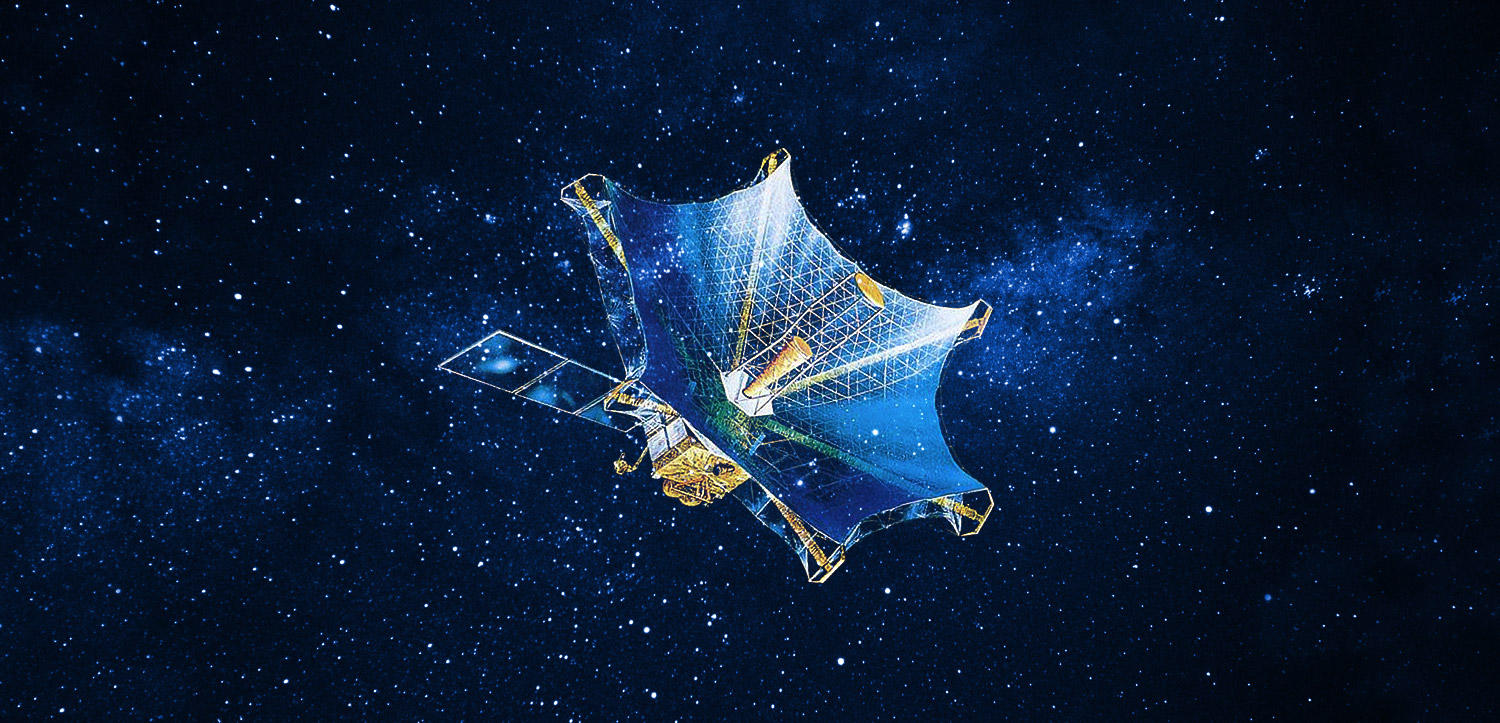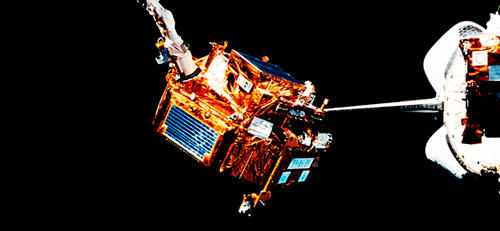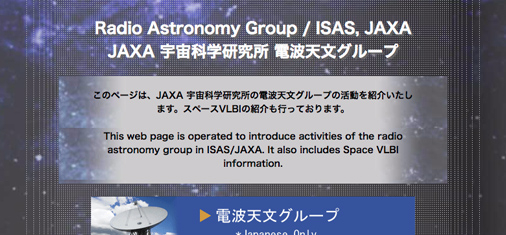HALCA was launched by M-V-1 on February 12, 1997. As a radio astronomy satellite, it conducted various engineering experiments including deployment of large antenna and VLBI interference experiments before successfully making VLBI observation. It is now a mainstay of the VSOP program, a large-scale international collaboration project.
Exceeding our original plan, it continued observation for a long time. Finally, on November 30, 2005, after long operation of 8 years and 9 months, HALCA performed its last operation and retired. Its remaining fuel was expelled to eliminate the chance of explosion and the last radio cutoff button was pressed by former project manager Mr. Hirosawa Haruto. The voice of the operator confirming transmission of the command signal at 11:28:08 (JST) sounded like a death sentence.
| Name (pre-launch in parentheses) | HALCA (MUSES-B) |
|---|---|
| International Designation code | 1997-005A |
| Objectives | Conduct radio-wave observation in orbit in combination with radio telescopes on the ground (VSOP: VLBI Space Observatory Programme). In addition, to conduct various engineering demonstrations including deployment technology of large antenna, highly stable data-transmission technology to compare atomic clock onboard the satellite with one on the ground, and precise attitude control. *VLBI: Very Long Baseline Interferometer |
| Launch Date | 13:50, February 12, 1997 (JST) |
| Launch Location | Kagoshima Space Center (Uchinoura) |
| Launch Vehicle | M-V-1 |
| Weight | Approx. 830 kg |
| Dimensions | Rectangular parallelepiped (1.5m x 1.5m x 1.0m) Equipped with a large deployable antenna with maximum diameter 10m (effective diameter 8m) |
| Orbit Altitude | Perigee 560 km, Apogee 21,000 km |
| Orbit Inclination | 31° |
| Type of orbit | Highly elliptical |
| Period | Approx. 6 hr 20 min |
| Scientific Instruments | Antenna with an effective diameter of 8 m, made of a combination of cable networks and metal-mesh mirror plane. Radio waves are led into the 2.5 m-long feed horn by two (main and sub) reflection mirrors. |
| End of Operation | November 30, 2005 |
| Operation | After launch, orbital control of the satellite was performed on February 14, 16 and 21, 1997, following the establishment of three-axis attitude control. On February 28, the deployment of the large antenna's main reflection mirror was completed. Full operation as a space VLBI satellite began after technical checkups, such as the establishment of interactive communication link with the tracking station. HALCA planned to use three frequency bands, 1.60/1.73GHz, 4.7/5.0GHz, and 22.0/22.3GHz. The sensitivity of the 22GHz band dropped drastically, however, probably caused by vibration at launch. Observations were thus made by using the 1.6GHz and 5.0GHz bands intensively. Before launch, mission life of HALCA was estimated to be about 3 years because radiation would damage its solar-array paddle and drastically shorten its life. Nevertheless, the satellite continued operating until November 2005, 8 years and 9 months after the launch. |
| Results | Using HALCA, a virtual radio telescope with an aperture of 30,000 km (about three times the earth's radius) was created. Observations of celestial bodies were conducted jointly with radio telescope networks on the ground across the world, We succeeded in observing radio waves and X-ray jet from quasar PKS0637-752 with a resolution of 2/10,000 arc sec and a jet from M87 Galaxy with 1/1,000 arc sec resolution. The international VSOP team realized space VLBI for the first time in the world and conducted observations. It was awarded the 2005 Laurel Award of IAA (International Academy of Astronautics). |




